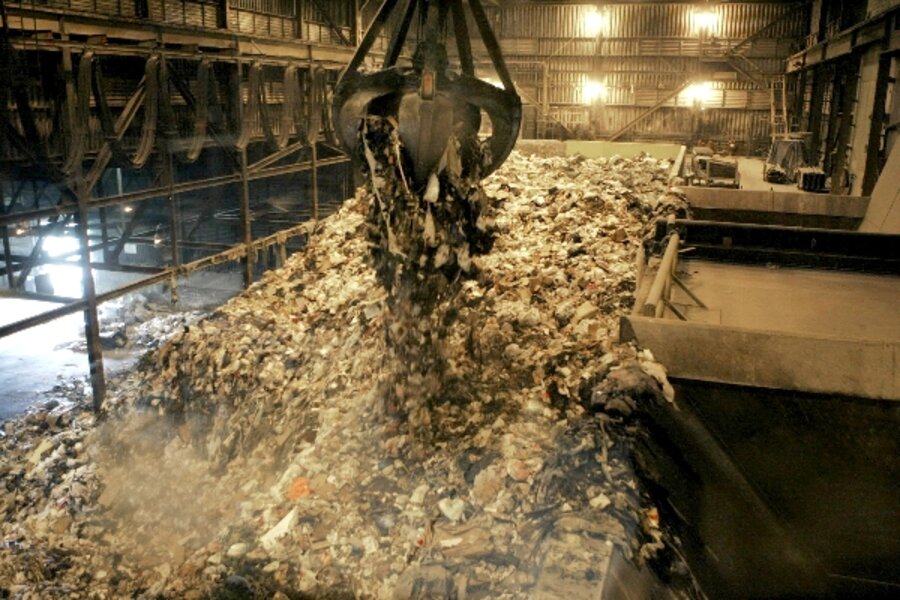Tapping the energy potential in our backyards
Loading...
Q: There’s a lot of talk today about solar and wind power, but what about biomass? How big a role might this renewable energy source play in our future? Couldn’t everyday people burn their own lawn and leaf clippings to generate power?
– Deborah Welch, Niagara Falls, N.Y.
A: The oldest and most prevalent source of renewable energy known to man, biomass is already a mainstay of energy production in the United States and elsewhere. Since such a wide variety of biomass resources is available – from trees and grasses to forestry, agricultural, and urban wastes – biomass promises to play a continuing role in providing power and heat for millions of people around the world.
According to the nonprofit Union of Concerned Scientists (UCS), biomass is not only a renewable energy source but also a carbon neutral one, because the energy it contains comes from the sun. When plant matter is burned, it releases the sun’s energy originally captured through photosynthesis. “In this way, biomass functions as a sort of natural battery for storing solar energy,” reports UCS. As long as biomass is produced sustainably – with only as much grown as is used – the “battery” lasts indefinitely.
While biomass is most commonly used, especially in developing countries, as a source of heat so families can stay warm and cook meals, it can also be utilized as a source of electricity. Steam captured from huge biomass processing facilities is used to turn turbines to generate electricity. Of course, biomass is also a feedstock for several increasingly popular carbon-neutral fuels, including ethanol and biodiesel.
According to the federal Energy Information Administration, biomass has been America’s leading nonhydroelectric renewable energy source for several years running through 2007, accounting for between 0.5 and 0.9 percent of the nation’s total electricity supply. In 2008 – although the numbers aren’t all in yet – wind power probably took over first place due to the extensive development of wind farms across the country.
According to the USA Biomass Power Producers Alliance, generating power from biomass helps Americans avoid some 11 million tons of carbon dioxide emissions that burning the equivalent amount of fossil fuels would create each year. It also helps avoid annual emissions of some 2 million tons of methane – which, as a greenhouse gas, is 20-plus times more powerful than carbon dioxide is.
The largest biomass power plant in the country is South Bay, Florida’s New Hope Power Partnership. The 140-megawatt facility generates electricity by burning sugar cane fiber (bagasse) and recycled urban wood, powering some 60,000 homes as well as the company’s own extensive milling and refining operations. Besides preserving landfill space by recycling sugar cane and wood waste, the facility’s electricity output obviates the need for about a million barrels of oil per year.
Some homeowners are making their own heat via biomass-fed backyard boiler systems, which burn yard waste and other debris, or sometimes prefabricated pellets, channeling the heat indoors to keep occupants warm. Such systems may save homeowners money, but they also generate a lot of local pollution.
So, really, the way to get the most out of biomass is to encourage local utilities to use it – perhaps even from yard waste put out on the curb every week for pickup – and sell it back to us as electricity.
Got an environmental question? Write: EarthTalk, c/o E – The Environmental Magazine, Box 5098, Westport, CT 06881. Or e-mail: earthtalk@emagazine.com.





